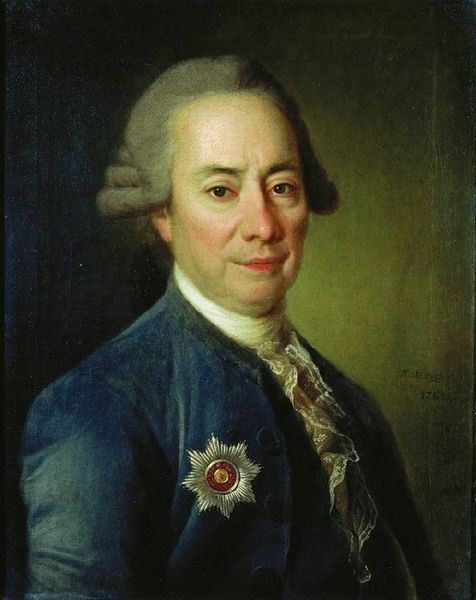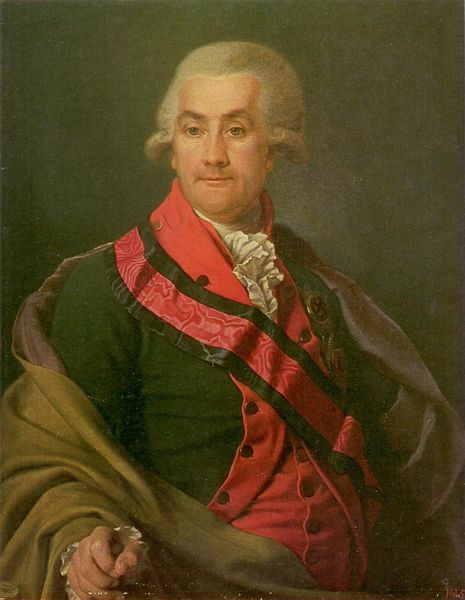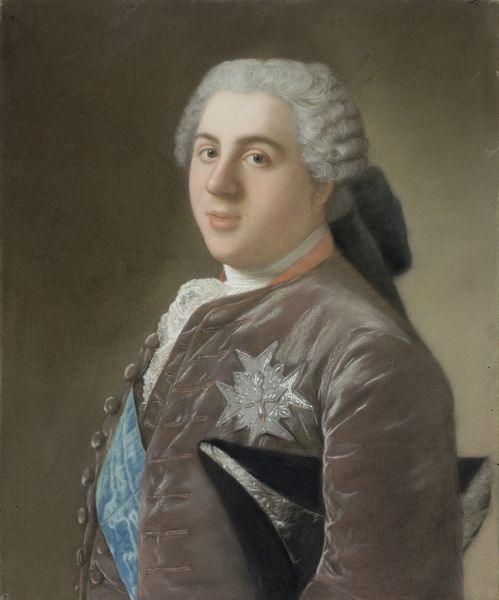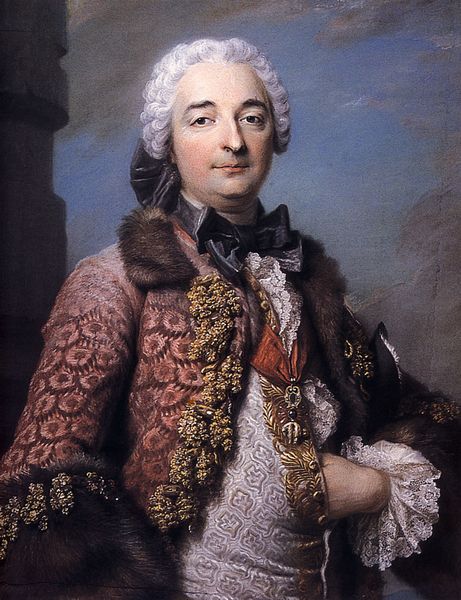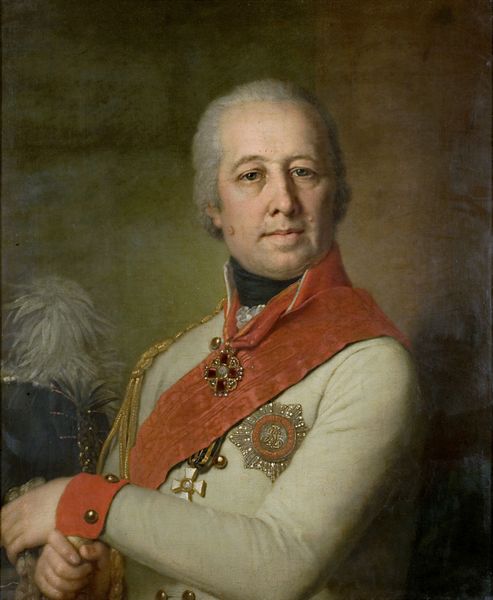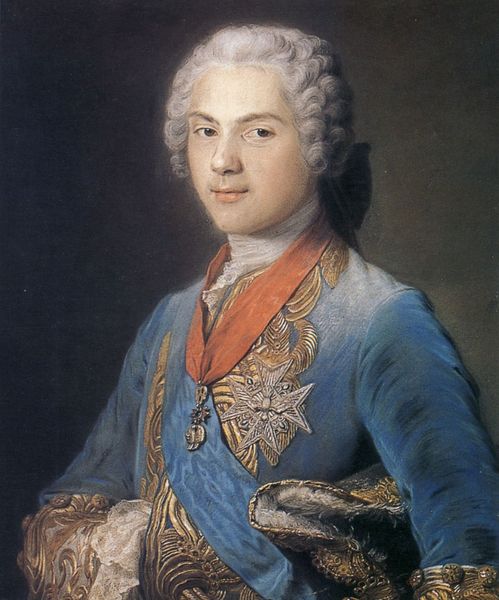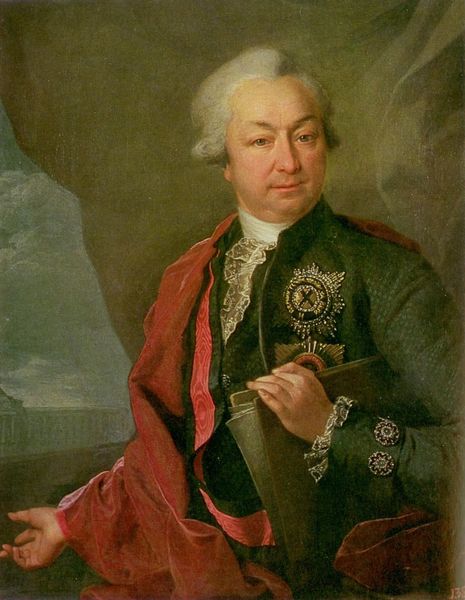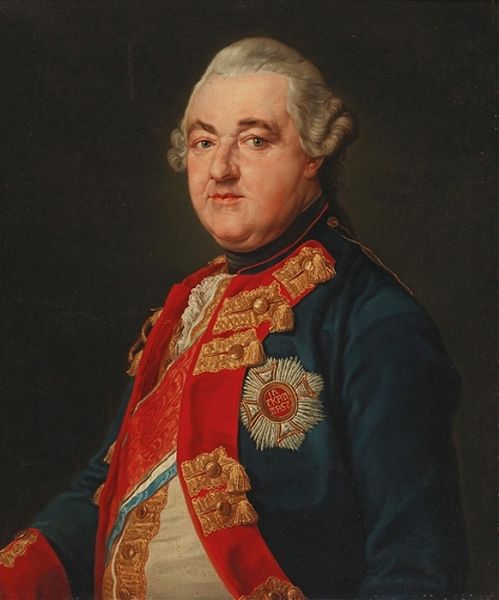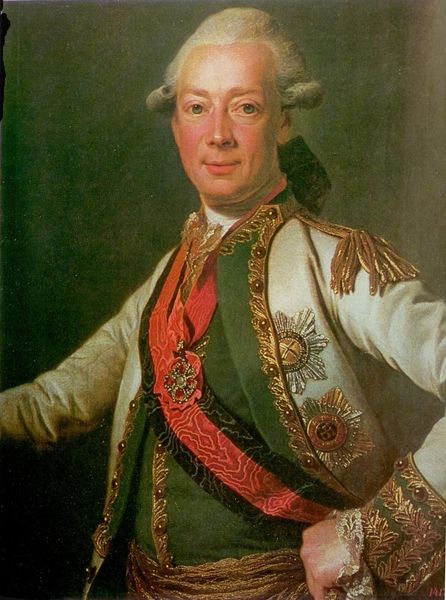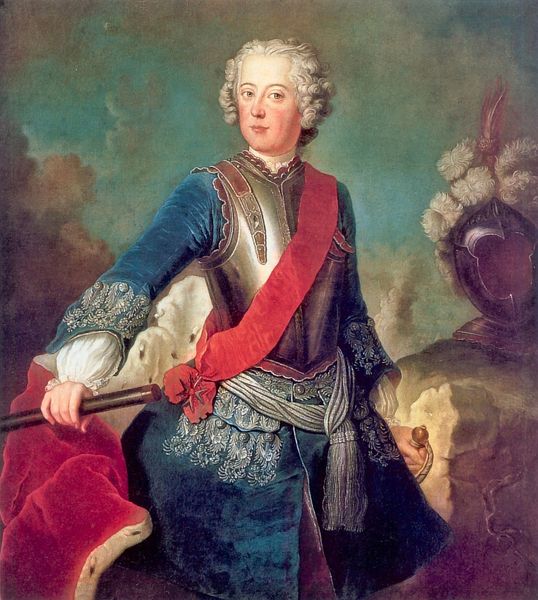
Copyright: Public domain
Curator: Here we have Dmitry Levitzky's oil portrait of "Russian general Mikhail Krechetnikov," completed in 1778. What strikes you initially about this piece? Editor: The man seems rather jolly. The detail is incredible and there are clearly very fine materials here. Is the quality of the oil paint a sign of high craftsmanship or elite patronage in Russia at the time? Curator: Undoubtedly, the quality of materials speaks to wealth and access, yes, but it also informs Levitzky's position in the Russian court system. He learned the established Western techniques in the thriving, European-influenced, St. Petersburg environment and utilized locally available materials to establish his craft. His detailed representation certainly satisfied the demands of nobility seeking flattering portraiture. Editor: Speaking of flattering, it’s certainly an idealization. The light, the rendering of his flesh… it's all constructed. Do you think this idealization has historical value in terms of power structures or the control of representation? Curator: I do. The sitter's accoutrements—ribbons, stars, meticulous wig, and rich green coat—all signify wealth, status, and valor, of course. I am interested in the role of tailors, wigmakers, painters assistants in fabricating these images of power. Also, the mining of materials, like the minerals that go into oil paint at the time, connect to land use and labor, providing historical context beyond just a royal commission. Editor: The cascade of finery seems almost excessive to modern eyes, yet Levitsky balances it deftly. His rendering of fabric, jewels, and skin demonstrates his mastery of form and light. We cannot discount his artistic skill in crafting this image, or ignore the echoes of Baroque grandeur melded with burgeoning Romantic ideals. Curator: Absolutely. Levitzky doesn't simply record; he interprets through learned techniques. In turn the commissioner demands idealizations to signify military and social success to contemporaries as well as a claim for posterity. It all becomes intertwined—production and artistry. Editor: In considering materiality, I see more clearly how the artist translates light and shadow to construct both the sitter's appearance and the symbolism of rank and influence, truly a merging of craft and intention. Curator: Indeed. It allows us to unpack complex questions about artistic creation, labor, and social ambition.
Comments
No comments
Be the first to comment and join the conversation on the ultimate creative platform.
